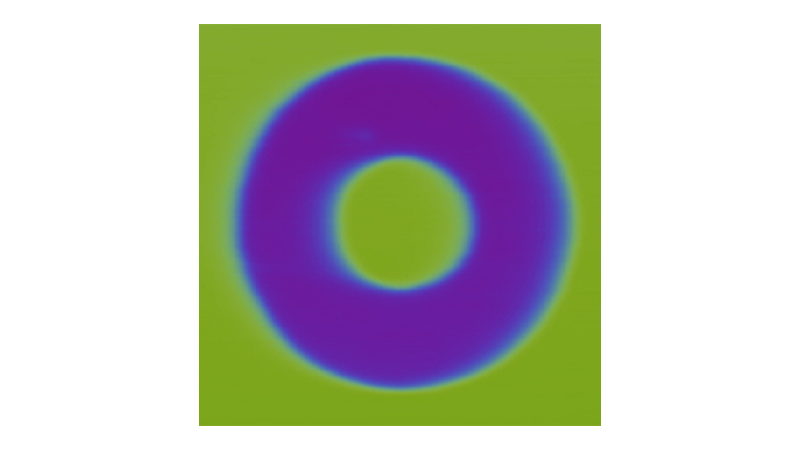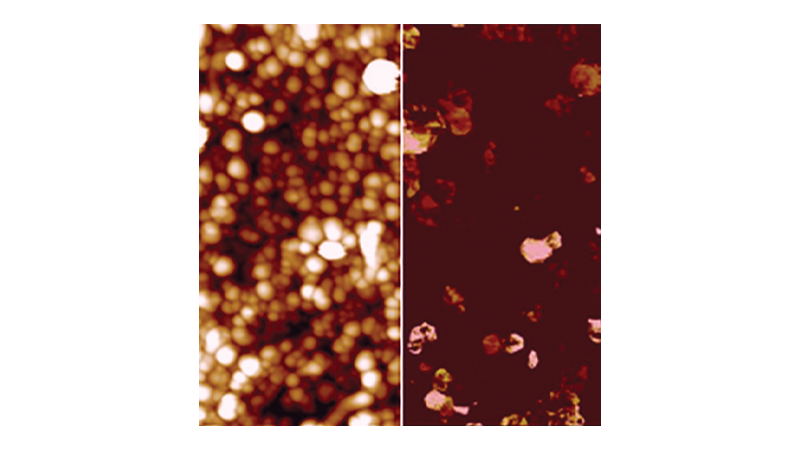In Situ Observation of the Insulator-To-Metal Transition and Nonequilibrium Phase Transition for Li1–xCoO₂ Films with Preferred (003) Orientation Nanorods
ACS Appl. Mater. Interfaces 11, 36 (2019)
Fast charging is key for many uses of Lithium-ion batteries. The associated high rates of de/intercalation of Lithium in the anode and cathode can lead to states far from equilibrium, making in situ, operando studies key to understanding electrode materials. In this publication, Chen et al. use in situ PeakForce TUNA with a PeakForce SECM nanoelectrode probe on a Dimension Icon to detect phase transitions in operando, in individual grains of LiCoO₂, a commonly used Li-ion cathode material.
Lithium extraction from LiCoO₂ leads to transition from O₃-I to O₃-II phase, with notoriously subtle structural changes but drastic conductivity increase that is highly relevant for battery applications. Disequilibrium and attendant nanoscale heterogeneity cause uneven stress and potential discontinuities in the cathode electrolyte interphase (CEI) with safety and lifetime implications. The in situ conductivity studies of Chen et al. reveal heterogeneity at the level of individual CoO₂ grains upon fast delithiation. Edge faces of the 003 plane become highly conductive while the center of the particles retains low conductivity, a behavior that can be explained by ion backflow giving rise to an ionic blockage layer and antiphase boundary. In this manner, Chen et al. show the high value of in situ conductivity studies by AFM for understanding and improving battery chemistry.


